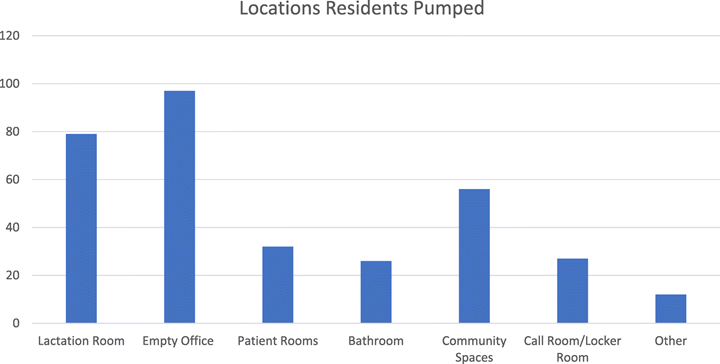|
In a time where 57.4% in the workforce are women and nearly 36% of physicians are women, now is the time to change the healthcare workplace culture surrounding breastfeeding and new mothers. The WHO, and the American Academy of Pediatrics recommends exclusive breastfeeding until children are 6 months of age. Breastfeeding provides health benefits to the mother, with decreased risks of high blood pressure, Type 2 diabetes, breast and ovarian cancer, as well as for the child, with reduced risks of obesity, asthma, Type 1 diabetes, ear infections and more. Breastfeeding is also an investment in their mental health, saves families money and impacts the country’s economy – $3 billion a year to medicals costs in the US are linked with low rates of breastfeeding. Some studies estimate that increasing breastfeeding levels to near universal levels could prevent up to hundreds of thousands of annual deaths worldwide in children 5 and under and prevent thousands of breast cancer deaths of women worldwide. In 2010 the US Congress passed the “Break Time for Nursing Mothers” law, requiring employers to provide a reasonable break time for expressing breastmilk for one year after childbirth. The federal law also states a need for new mothers to have access to “a place, other than a bathroom, that is shielded from view and free from intrusion from coworkers and the public, which may be used by an employee to express breast milk.” A study done in 2016 at University of Minnesota found that 60% of women reported that they do not have access to adequate break time or space to pump breast milk. Workplace hours, the scarcity of spaces, and lack of cultural acceptance all act as hindrances to breastfeeding mothers. Even when workplaces provide spaces, they are often inadequate; lactation rooms rarely meet labor standards of privacy, sterility, comfort, pump storage, and milk storage. Despite the fact that 57% of people working in healthcare are women, their workplaces are no exception to limited access (Figure 2). Figure 2. Locations Residents Pumped, BMC Pregnancy In the past decade, there has been an 800% increase in lawsuits based in claims where an employer denied accommodations or discriminated against a woman who needed to express milk. These cases highlight of the need for education of decision makers in the workplace and the public, about the benefits of breastfeeding for the physical and mental health of employees and their children. While evidence shows that policies of paid maternity leave benefits would increase breastfeeding rates and extend length of breastfeeding, the US currently ranks lowest among high income countries, offering mothers zero days of paid maternity leave. It is critical that we update our workplace policies to reflect a culture of support for lactating parents and create spaces that are welcoming and visible to express breast milk or breastfeed in the workplace and healthcare environment. Policy advancements would build on changes that have already been made. Many employers now offer places for mothers to express milk or breastfeed at work or in public, including the use of lactation pods at some institutions and airports. These changes are encouraging a culture that normalizes public breastfeeding and removes barriers like guilt, shame and inconvenience for breastfeeding. Supporting these policies is an investment in children, parents, our economy, and our healthcare system. About the Author:Sara Al-Zubi is a fourth-year MD/MPP at Harvard Medical School and Harvard Kennedy School of Government. She has a strong passion for global health and women's rights, which led to her starting various national and international initiatives. In her free time, Sara loves to read, travel, and spend time with friends and family.
0 Comments
Your comment will be posted after it is approved.
Leave a Reply. |
©2017 WeighingInBlog. All rights reserved. 401 Park Drive, Boston, MA






 RSS Feed
RSS Feed

